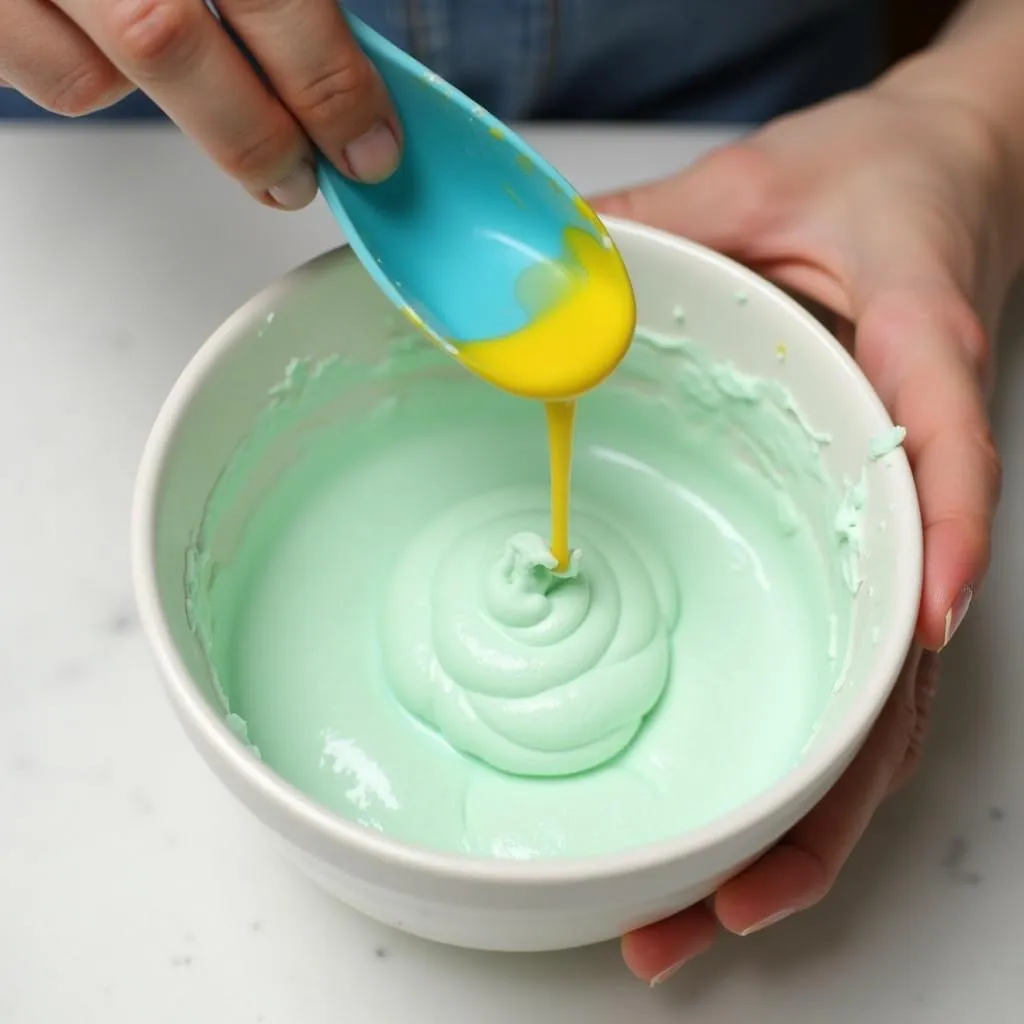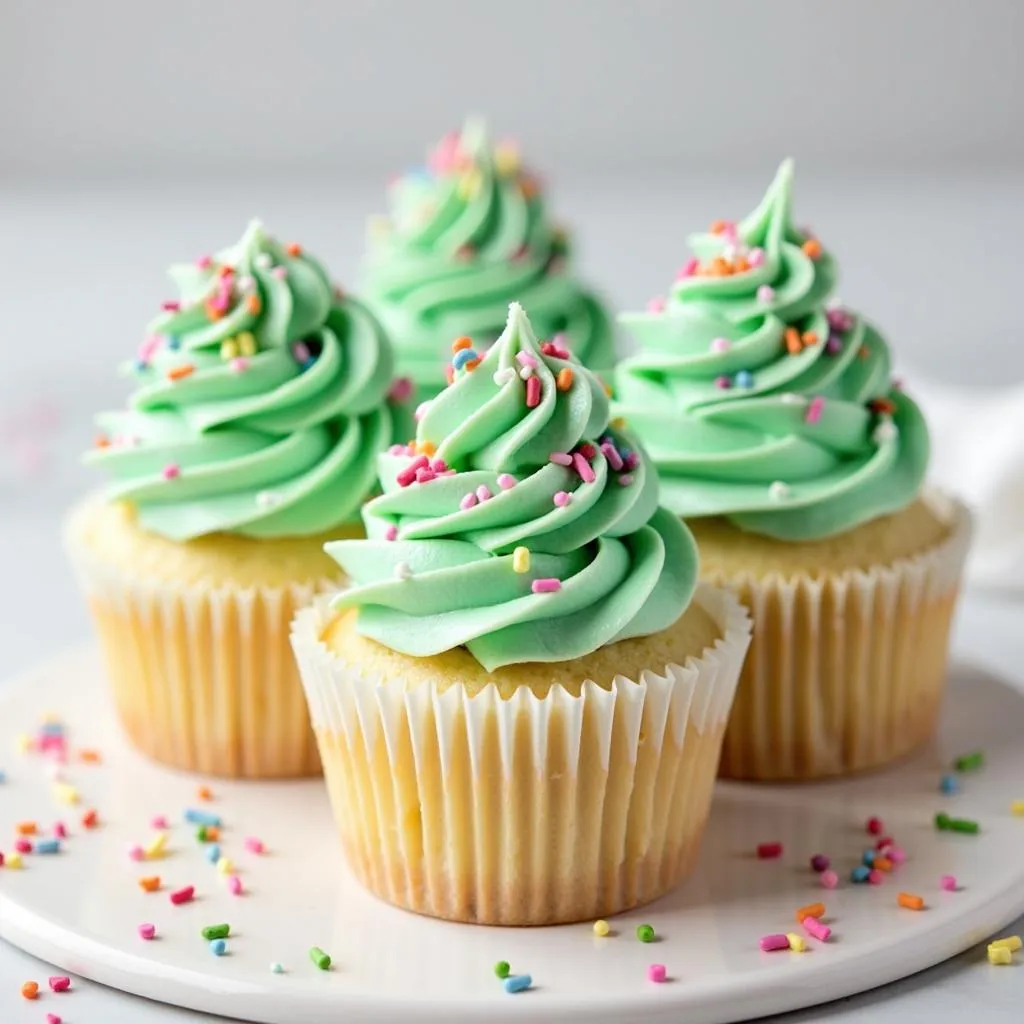Creating the perfect shade of mint green is easier than you might think. Whether you’re frosting a cake, dyeing frosting, or making DIY slime, achieving that refreshing hue is just a few drops away. This guide will walk you through the simple steps of mixing food coloring to achieve a beautiful mint green, and offer tips for achieving your desired shade.
Understanding the Basics of Color Mixing
Before diving into making mint green, it’s helpful to understand the basic principles of color mixing.
- Primary Colors: Red, blue, and yellow are primary colors. You can create a wide spectrum of colors by mixing these three.
- Secondary Colors: Green, orange, and violet are secondary colors. You create them by mixing two primary colors.
To make green, you’ll need to combine blue and yellow. The ratio of blue to yellow will determine whether you end up with a vibrant green or a more muted tone.
What Colors Make Mint Green with Food Coloring?
To achieve that soft, refreshing mint green, you’ll be using:
- Blue Food Coloring: This serves as the base for your green.
- Yellow Food Coloring: A touch of yellow softens the blue and creates the minty hue.
A Step-by-Step Guide to Mixing Mint Green Food Coloring
Materials:
- Blue food coloring
- Yellow food coloring
- Toothpicks or small spoons
- White bowl or plate
Instructions:
- Start with White: Begin with a white base, such as white frosting, icing, or a mixture you are coloring. This ensures the colors blend true and vibrant.
- Add Blue: Add a few drops of blue food coloring to your white base. Remember, it’s always easier to add more color, so start small.
- Introduce Yellow: Gradually add drops of yellow food coloring, mixing thoroughly between each addition.
- Adjust and Blend: Continue to add blue and yellow, a drop at a time, until you achieve your desired mint green shade. Remember to mix completely after each addition to ensure the color is evenly distributed.
Pro Tip: For a lighter mint green, use more yellow. For a deeper, more turquoise hue, increase the blue.
 Mixing Food Coloring to Make Mint Green
Mixing Food Coloring to Make Mint Green
Tips for Success
- Gel vs. Liquid Food Coloring: Gel food coloring provides a more concentrated pigment, resulting in vibrant colors with fewer drops. Liquid food coloring is more readily available but might require more drops to achieve the same intensity.
- Test on a Small Sample: Before committing to coloring a large batch, test your mint green on a small portion to ensure you are satisfied with the shade.
- Natural Alternatives: For a more natural approach, you can experiment with spinach or spirulina powder to add a subtle green tint. However, these options may not result in a vibrant mint green.
Troubleshooting Your Mint Green
- Too Blue? Add small amounts of yellow food coloring, mixing thoroughly until the desired shade is reached.
- Too Green? A tiny drop of red food coloring can help neutralize an overly green tone. Be careful with the red, as it can quickly turn your mixture brown.
- Color Too Light? Gradually add more drops of blue and yellow, maintaining the same ratio used initially.
 Mint Green Frosting on Cupcakes
Mint Green Frosting on Cupcakes
Mint Green: A Versatile and Refreshing Hue
Once you’ve mastered the art of creating mint green, the possibilities are endless:
- Culinary Delights: Mint green is a popular choice for cake frosting, macarons, and other desserts, adding a touch of elegance and freshness.
- Creative Crafts: From DIY slime to homemade playdough, mint green offers a world of crafting fun.
- DIY Projects: Add a pop of color to homemade candles, soaps, or bath bombs with a touch of mint green dye.
Frequently Asked Questions about Making Mint Green Food Coloring
Q: Can I use natural food coloring to make mint green?
A: While natural options like spinach or spirulina powder can add a hint of green, achieving a true mint green with natural dyes can be challenging.
Q: What happens if my mint green is too dark?
A: If your mixture becomes too dark, you can try adding small amounts of your original white base to lighten it.
Q: Can I save leftover mint green frosting or icing?
A: Yes, you can store any leftover frosting or icing in an airtight container in the refrigerator for later use. Make sure to let it come to room temperature before using it again.
Need More Help?
For personalized advice on creating the perfect mint green or for all your home design and color needs, contact Color Box Hanoi at 0373298888, email us at [email protected], or visit us at 86 Cau Giay, Hanoi. Our team is available 24/7 to provide expert guidance and support.

